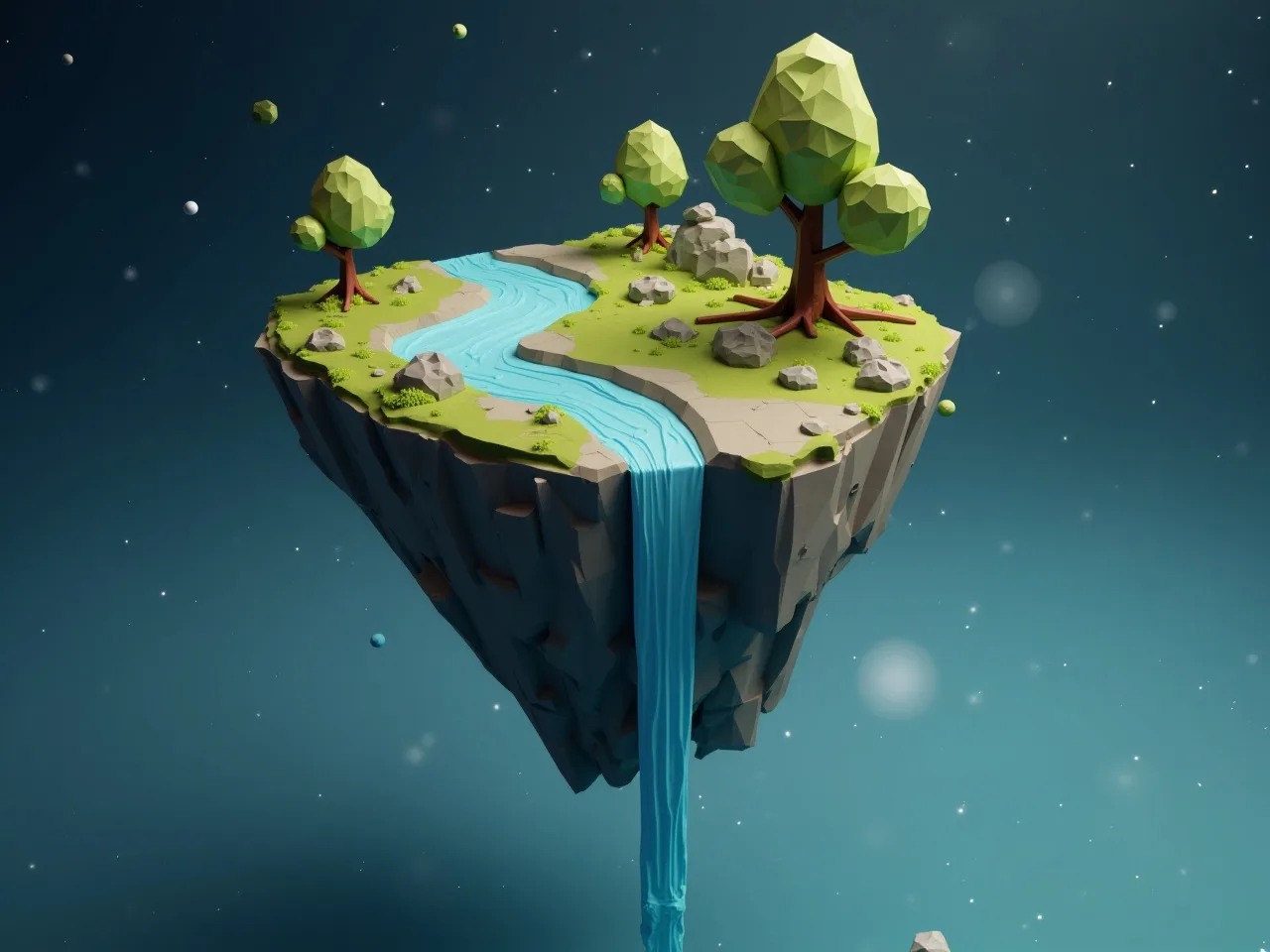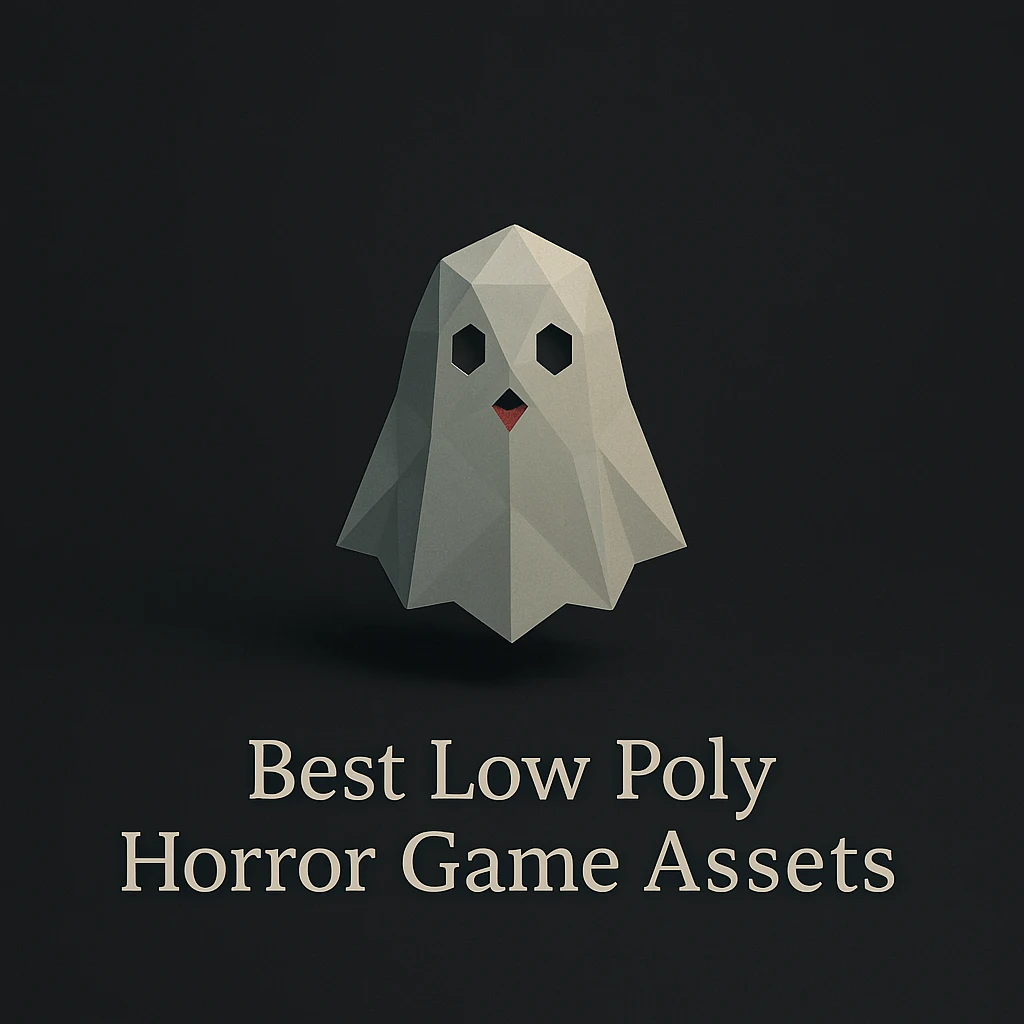Low Poly vs High Poly: Which 3D Modeling Approach is Best for Your Game?
by Animatics Asset Store in Blog on September 9, 2024When it comes to developing a game, one of the most significant decisions you’ll make is selecting the right 3D modeling approach. The choice between low poly and high poly models can influence not only the game’s visual style but also its performance, platform compatibility, and even development time. So, which approach is better for your game?
In this article, we’ll explore the differences between low poly and high poly models, their pros and cons, and how to determine the best option for your specific game development needs.
What is Low Poly Modeling?
Low poly modeling refers to the creation of 3D models using a relatively small number of polygons. Polygons are the geometric building blocks that form the shape of a model. The fewer polygons a model has, the less detailed it is, but the performance benefits are substantial.
Key Features of Low Poly Models
- Efficiency: Low poly models are lightweight, meaning they use fewer system resources, making them ideal for real-time applications like video games. These models are especially common in mobile games and games that prioritize performance over visual fidelity.
- Simplified Aesthetic: While less detailed, low poly models often have a distinctive visual appeal. Their blocky, minimalist style can enhance a game’s artistic direction. This style has gained popularity because it gives games a unique, stylized appearance.
- Fast Rendering: Because of their simplicity, low poly models require significantly less computational power to render. This means faster load times and smoother performance, especially on devices with limited processing capabilities.
Pros of Low Poly Models
- Faster rendering and performance: With fewer polygons to process, the game runs more smoothly, even on lower-end hardware.
- Shorter development time: Creating a low poly model takes significantly less time compared to a high poly model, which can be an advantage for indie developers or smaller teams.
- Cost-effective: Less development time typically means reduced costs.
Cons of Low Poly Models
- Less detail: The biggest downside is that low poly models offer less visual detail, which might not be ideal for games that aim for realism.
- Limited realism: The minimalist style may not suit games that require a high degree of realism.
Use Case Example
Think of “Among Us“, a massively popular game that features low poly models. The simplicity of its art style contributed to its viral success without sacrificing gameplay quality. It’s a clear example of how a low poly 3D modeling approach can create a visually engaging and successful game while maintaining performance on a wide range of devices.
Want to know how to create exceptional low poly 3d models? Read this
What is High Poly Modeling?
High poly modeling, as the name suggests, involves creating 3D models with a large number of polygons. The more polygons a model has, the more detailed and realistic it becomes. High poly models are commonly used in AAA games where visual fidelity and realism are critical to the experience.
Key Features of High Poly Models
- Visual Fidelity: High poly models can achieve a high level of realism, capturing intricate details like facial expressions, textures, and lighting effects. This makes them ideal for games that emphasize immersive and realistic environments.
- Photorealism: These models are typically used in situations where achieving photorealistic results is a priority, such as cutscenes, character designs, or even pre-rendered sequences in a game.
- Complex Geometry: High poly models feature complex geometry, which allows for more intricate surface details. However, this comes at the cost of performance.
Pros of High Poly Models
- Increased detail: More polygons mean the model can represent more intricate features, leading to more realistic and visually compelling designs.
- Photorealism: High poly models can come close to mimicking the real world, which is essential for AAA titles or games that prioritize graphics over performance.
Cons of High Poly Models
- Resource-heavy: High poly models require significant system resources. This can slow down performance and cause lag in real-time applications.
- Longer development time: High poly models take much longer to create, requiring more skill and time investment from the development team.
- Platform limitations: These models might not run efficiently on lower-end devices or consoles.
Use Case Example
Consider “The Last of Us Part II“, which features high poly models to achieve stunningly realistic characters and environments. The high polygon count allows the game to render nuanced facial expressions and lifelike environmental details, contributing to its emotional storytelling. However, these detailed models are optimized for high-end systems, ensuring the game performs well on the latest hardware.
Performance Considerations: Low Poly vs High Poly
The performance of your game is highly dependent on the 3D modeling approach you choose. Let’s break down how low poly and high poly models affect game performance:
- Low Poly Models: These models are faster to render and consume fewer system resources. This makes them an excellent choice for real-time applications, such as mobile games or large multiplayer games where performance and frame rate are critical. According to a report by Newzoo, mobile gaming made up 57% of the global gaming market in 2023, highlighting the importance of optimizing games for lower-end devices. Low poly models help you do just that.
- High Poly Models: High poly models, with their increased detail, require more processing power and memory to render. This can slow down real-time applications and even cause performance issues if not properly optimized. However, they shine in high-end PC or console games where performance trade-offs for visual fidelity are acceptable.
Artistic Style: What’s Right for Your Game?
Your choice of modeling approach will also depend on the artistic direction of your game.
Low Poly: Minimalist and Artistic
Low poly models often give games a distinct artistic flair. Their blocky, geometric appearance has a charm that many developers are deliberately embracing. Low poly games tend to focus on stylized visuals rather than realism.
For instance, “Monument Valley“ uses low poly models to create its surreal, dreamlike landscapes. The minimalist style not only complements the gameplay but also ensures smooth performance across devices.
High Poly: Realistic and Immersive
High poly models are essential for games that prioritize realism. If your game is built around delivering an immersive experience, where the player needs to feel like they’re inside the game world, high poly modeling is the way to go.
“Assassin’s Creed: Valhalla“ is an excellent example of this. The game uses high poly models to create lifelike characters, realistic environments, and immersive atmospheres, making the player feel as though they’ve stepped into an actual historical period.
Development Time and Budget Implications
Another major consideration when choosing between low poly and high poly is how much time and money you’re willing to invest in development.
- Low Poly Development: These models are faster and cheaper to produce, making them an excellent choice for indie developers or smaller studios with limited resources. A simple character model can take anywhere from 20 to 40 hours to complete, depending on the complexity.
- High Poly Development: High poly models, on the other hand, are time-intensive. Creating a detailed high poly character model can take 100+ hours, making it a more expensive option. Larger studios with bigger budgets tend to opt for high poly models to achieve the level of detail required for AAA games.
Hybrid Approaches: Finding the Balance
In some cases, developers choose a hybrid approach, combining elements of both low poly and high poly models. For example, you might use high poly models for your main characters and low poly models for background elements or props. This approach allows you to balance visual fidelity with performance.
Conclusion
Ultimately, the choice between low poly and high poly models depends on the specific needs of your game. If your focus is on performance, accessibility, and a unique art style, low poly is the way to go. On the other hand, if you’re aiming for realism and are targeting high-end platforms, high poly models will serve you best.
By carefully considering your game’s style, platform, and performance requirements, you can select the right 3D modeling approach to bring your vision to life.






